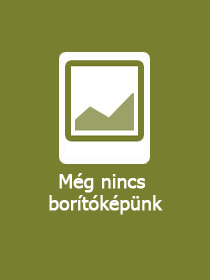
Pieter Bruegel the Elder
Religious Art for the Urban Community
Sorozatcím: Art and Material Culture in Medieval and Renaissance Europe; 15;
-
8% KEDVEZMÉNY?
- A kedvezmény csak az 'Értesítés a kedvenc témákról' hírlevelünk címzettjeinek rendeléseire érvényes.
- Kiadói listaár EUR 133.00
-
56 418 Ft (53 732 Ft + 5% áfa)
Az ár azért becsült, mert a rendelés pillanatában nem lehet pontosan tudni, hogy a beérkezéskor milyen lesz a forint árfolyama az adott termék eredeti devizájához képest. Ha a forint romlana, kissé többet, ha javulna, kissé kevesebbet kell majd fizetnie.
- Kedvezmény(ek) 8% (cc. 4 513 Ft off)
- Discounted price 51 905 Ft (49 433 Ft + 5% áfa)
56 418 Ft

Beszerezhetőség
Bizonytalan a beszerezhetőség. Érdemes még egyszer keresni szerzővel és címmel. Ha nem talál másik, kapható kiadást, forduljon ügyfélszolgálatunkhoz!
Why don't you give exact delivery time?
A beszerzés időigényét az eddigi tapasztalatokra alapozva adjuk meg. Azért becsült, mert a terméket külföldről hozzuk be, így a kiadó kiszolgálásának pillanatnyi gyorsaságától is függ. A megadottnál gyorsabb és lassabb szállítás is elképzelhető, de mindent megteszünk, hogy Ön a lehető leghamarabb jusson hozzá a termékhez.
A termék adatai:
- Kiadó BRILL
- Megjelenés dátuma 2019. július 11.
- ISBN 9789004400399
- Kötéstípus Keménykötés
- Terjedelem242 oldal
- Méret 235x155 mm
- Súly 535 g
- Nyelv angol 0
Kategóriák
Rövid leírás:
In Pieter Bruegel the Elder: Religious Art for the Urban Community Barbara Kaminska offers the first book-length study of Bruegel?s biblical paintings, and argues that they were inherently linked to Antwerp?s religious, socio-economic, and cultural transformation.
TöbbHosszú leírás:
Barbara Kaminska?s Pieter Bruegel the Elder: Religious Art for the Urban Community is the first book-length study focusing on religious paintings by one of the most captivating Netherlandish artists, long celebrated for his secular imagery. In a period marked by a profound religious, economic, and cultural transformation, Bruegel offered his sophisticated urban audience complex biblical images that required an engaged, active viewing, not only sparking learned dinner conversations, but facilitating the negotiation of values seen as critical to maintaining a harmonious society. By considering the novelty of Bruegel?s panels used in convivia alongside his small, intimate grisaille compositions, this study ultimately shows that Bruegel renewed the idiom of religious painting, successfully preserving its ritualistic and meditative functions.
TöbbTartalomjegyzék:
Contents
Acknowledgments
List of Figures
Introduction
1 Negotiating Entrepreneurship in Early Modern Antwerp: Pieter Bruegel?s The Tower of Babel
1 For ?an Idel and Foolish Ostentation of Money?? The Tower of Babeland the Ambiguities of Progress
2 Framing the Tower of Babel: Space, Conversation, People
3 Monopolies, Self
-Interest, and the Common Good
4 Antwerp as an International ?Community of Commerce? in Philip?s 1549 Joyous Entry
2 Conversion on Display: Imperial Politics, Religious Transformation, and Socioeconomic Stability in Antwerp
1 Images of the Conversion of Saint Paul in Probate Inventories and the Location of Works of Art
2 ?Alzo tot onzer kennesse ghecommen es?: Habsburg Legislation and the Culture of External Display in Antwerp
3 Defining Conversion in the Sixteenth
-Century Low Countries
4 Between Light and Darkness: Bruegel?s The Conversion of Saint Paul and Dutch Vernacular Theatre
5 Toward a New Model of Religiosity
3 ?In Their Houses?: Domestic Space and Religious Practices in Mid
-Sixteenth
-Century Antwerp
1 ?Permissible even for sailors?? Lay Reading of the Bible and Spanish Legislation in Antwerp
2 Theological Approaches to Religious Imagery in Private Households
3 In ?zyne huysen?: The Procession to Calvary, Ommegangen, and the Relocation of Religious Practices
4 ?Outside in the Woods?: The Sermon of Saint John the Baptistand Hedge
-Preaching in Antwerp
1 Picturing Conversations in Bruegel?s Sermon of Saint John the Baptist
5 ?If You Are without a Sin?: Religious and Artistic Discourse in Christ and the Woman Taken in Adultery
1 Truth and Penitence in Christ and the Woman Taken in Adultery
2 Adultery, Idolatry, and Rhetorical Strategies of Bruegel?s Grisaille
6 Choosing ?the Best Part?: Christian Death and Life in Bruegel?s The Death of the Virgin
1 ?Sweet Sleep? and the Transition from Vita Activa to Vita Contemplativa in Bruegel?s Grisaille
2 Artistry and Theological Truth in the Images of the Death of the Virgin
Epilogue
Bibliography
Index




